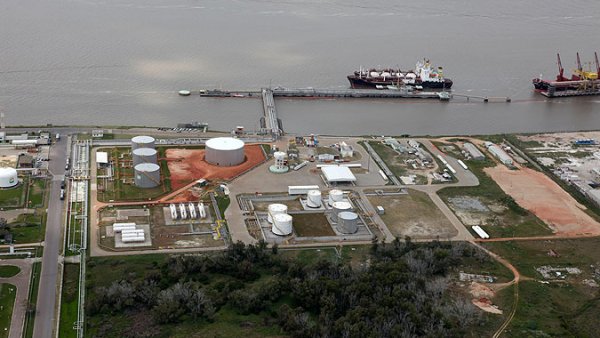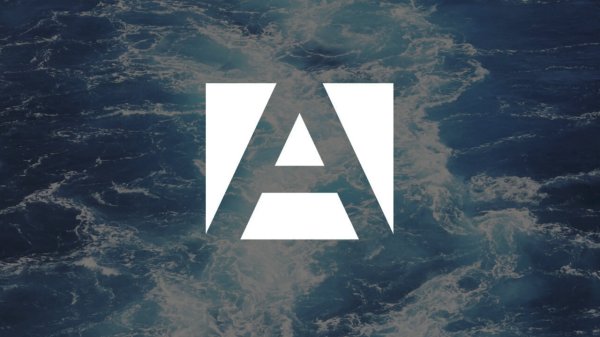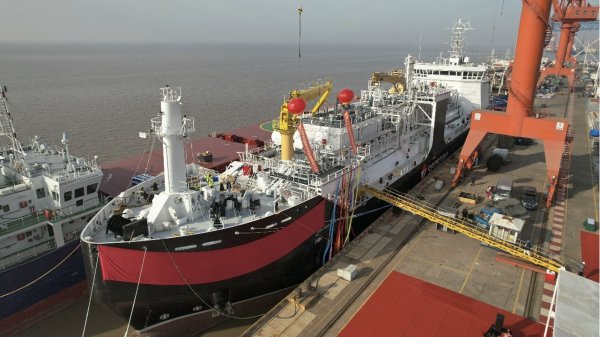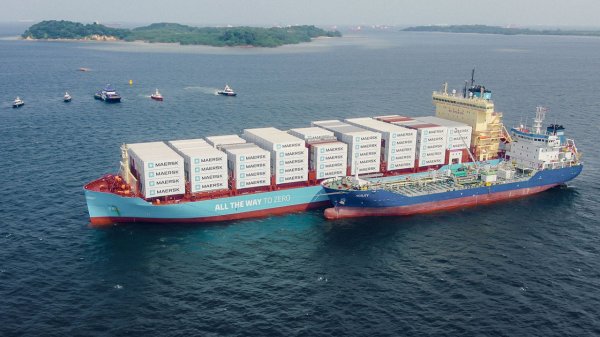Singapore approves first vessel of 2017 for MFM bunkering
Hong Lam Marine's Sea Swift gets MPA go-ahead.
The Maritime and Port Authority of Singapore (MPA) has approved the first vessel of 2017 for mass flow meter (MFM) bunkering.
On 3rd January, the Singapore-flagged Sea Swift was given the go-ahead to carry out marine fuel deliveries with MFM technology. Built in 2003, the oil products tanker is operated by bunker supplier Hong Lam Marine; it has a gross tonnage (grt) of 2,673 tons and a deadweight tonnage (dwt) of 4,998 tons.
According to information provided by the MPA on 6th January, the Sea Swift is the only vessel so far this year to be approved for MFM bunker deliveries.
Since the MPA's update on 28th December, however, the actual number of licensed MFM-equipped vessels has, in fact, decreased. This is because four vessels previously approved for MFM bunkering no longer appear in the MPA's list of licensed bunker tankers. The four vessels are: Pink Diamond (approved 11th March 2016), Giselle (approved 31st December 2014), Poseidon (approved 24th November 2015) and JW Jewel (approved 9th July 2015).
As a result, the total number of MFM-equipped bunker tankers with MPA licenses is now 132, down from 135 on 28th December. The number of licensed bunker tankers in Singapore has also declined - from 212 to 206 - since 28th December. In addition to the four vessels mentioned, the 1,999-grt Eustance and the 4,191-grt Honey Jade no longer hold an 'SB' tanker licence.
Below is a month-by-month breakdown of the number of vessels that have gained MFM approval since January 2016.
Jan 2016 - 2
Feb 2016 - 3
Mar 2016 - 5 (4 still valid)
Apr 2016 - 7
May 2016 - 3
Jun 2016 - 12
Jul 2016 - 7
Aug 2016 - 5
Sep 2016 - 8
Oct 2016 - 9
Nov 2016 - 8
Dec 2016 - 11
Jan 2017 - 1
On 3rd January, the Singapore-flagged Sea Swift was given the go-ahead to carry out marine fuel deliveries with MFM technology. Built in 2003, the oil products tanker is operated by bunker supplier Hong Lam Marine; it has a gross tonnage (grt) of 2,673 tons and a deadweight tonnage (dwt) of 4,998 tons.
According to information provided by the MPA on 6th January, the Sea Swift is the only vessel so far this year to be approved for MFM bunker deliveries.
Since the MPA's update on 28th December, however, the actual number of licensed MFM-equipped vessels has, in fact, decreased. This is because four vessels previously approved for MFM bunkering no longer appear in the MPA's list of licensed bunker tankers. The four vessels are: Pink Diamond (approved 11th March 2016), Giselle (approved 31st December 2014), Poseidon (approved 24th November 2015) and JW Jewel (approved 9th July 2015).
As a result, the total number of MFM-equipped bunker tankers with MPA licenses is now 132, down from 135 on 28th December. The number of licensed bunker tankers in Singapore has also declined - from 212 to 206 - since 28th December. In addition to the four vessels mentioned, the 1,999-grt Eustance and the 4,191-grt Honey Jade no longer hold an 'SB' tanker licence.
Below is a month-by-month breakdown of the number of vessels that have gained MFM approval since January 2016.
Jan 2016 - 2
Feb 2016 - 3
Mar 2016 - 5 (4 still valid)
Apr 2016 - 7
May 2016 - 3
Jun 2016 - 12
Jul 2016 - 7
Aug 2016 - 5
Sep 2016 - 8
Oct 2016 - 9
Nov 2016 - 8
Dec 2016 - 11
Jan 2017 - 1

|
VARO Energy expands renewable portfolio with Preem acquisition
All-cash transaction expected to complete in the latter half of 2025. |
|
|
|
||

|
NYK trials biofuel in milestone coal carrier test
Vessel is used to test biofuel for domestic utility company. |
|
|
|
||

|
H-Line Shipping orders LNG bunkering vessel
Vessel with 18,000-cbm capacity to run on both LNG and MDO. |
|
|
|
||

|
How to engineer and manage green shipping fuels | Stanley George, VPS
Effective management strategies and insights for evolving fuel use. |
|
|
|
||

|
Swedish government bans scrubber wastewater discharges
Discharges from open-loop scrubbers to be prohibited in Swedish waters from July 2025. |
|
|
|
||

|
MAN Energy Solutions achieves 100% load milestone for ammonia engine
Latest tests validate fuel injection system throughout the entire load curve. |
|
|
|
||

|
Petrobras secures ISCC EU RED certification for B24 biofuel blend at Rio Grande
Blend consisting of 24% FAME is said to have been rigorously tested to meet international standards. |
|
|
|
||

|
Stolt-Nielsen to fully control Avenir LNG with acquisition
Share purchase agreement to buy all shares from Golar LNG and Aequitas. |
|
|
|
||

|
Bureau Veritas supports launch of CIMC SOE's LNG bunkering vessel
Handover of Seaspan Energy's cutting-edge 7,600-cbm vessel completed. |
|
|
|
||

|
Methanol as a marine fuel | Steve Bee, VPS
How environmental legislation has driven the development of low-sulphur fuels and methanol-ready ships. |
|
|
|
||
Related Links
- · Bunker survey licence issued to 51 Singapore firms [Insights]
- · Singapore to start 2017 with 135 MFM-equipped bunker vessels [Insights]
- · 'Many enquiries' for TR48-certified MFMs from non-Singapore suppliers [Insights]
- · IBIA finalises SOP for surveyors in Singapore to harmonise approach to MFMs [Insights]
- · Launch of world's first national standard for bunker mass flow metering [Insights]
- · Singapore [Directory]
- · Singapore [Directory]

